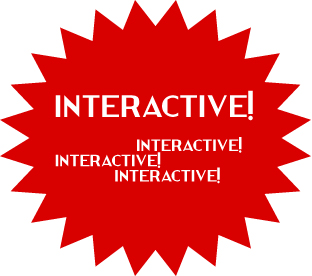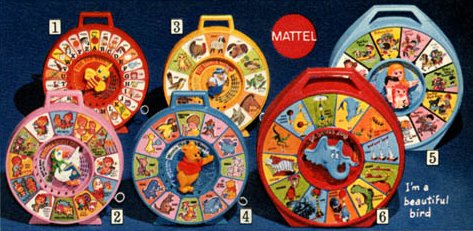 Recently, I came across catalog copy for a book with a big starburst sticker on the cover that boasted that this book had some extra feature that made it “INTERACTIVE!”
Recently, I came across catalog copy for a book with a big starburst sticker on the cover that boasted that this book had some extra feature that made it “INTERACTIVE!”
I’m a little mystified by the impulse to add moving parts or noises to books to make them seem more interactive than they already are. Reading a book not only requires a complex set of skills involved in decoding words and making meaning from them, but involves the imagination, engages predictive thinking, and—depending on the content and challenge of the material—invites reflection and the processing of new information. Readers create the world of a book alongside the author. Reading lights up the brain all over.
The truth is, the more “interactive” a book is, the less a reader is required to engage meaningfully with it. When you add bells and whistles that do the work for you, you’re actually making it less interactive, neurologically speaking.
Readers necessarily interact with a book by creating mental images and making connections as they read; the brain is quite active while reading. In fact, reading is apparently one of the top ways to exercise your brain, along with learning another language, meditating, and getting some physical exercise.
So the interactive label seems more like marketing hype to hook consumers more than something that adds true value to a book. I’m not a total curmudgeon; as a young reader, I adored books that did fun things. Bennett Cerf’s pop-up joke books were read to tatters, and for a solid year, the See-n-Say was my favorite word-related toy. Heck, I *still* encounter pop-up and lift-the-flap books that knock my little reader self’s socks off. But I don’t think anyone would have claimed that the pop-up book or the See-n-Say made me a better thinker.

Somewhat serendipitously for this post, Salon just ran an article by Sara Scribner titled, “Your iPhone addiction will rot your kid’s brain,” with subtitle teasers “iPads and other devices aren’t really interactive. An expert on the need to read for kids.” In the article, Scribner interviews Jason Boog, author of Born Reading: Bringing Up Bookworms in a Digital Age — From Picture Books to eBooks and Everything in Between. This new book takes a look at interactivity from a slightly different— and just as important—angle: the interactivity that happens when a child and adult read and discuss books together.
I haven’t read the book yet, but will look forward to seeing what it has to say about young readers and books and devices.
As for the type of “INTERACTIVITY” shouted by burst-shaped stickers on book covers, well, I’m not sure how many parents are taken in by that label. But I’m entirely certain that they will be able to assess its relative value, for better or worse, after a single reading.


Good post! I feel the same way about the term “educational”. When customers ask for educational toys, my standard response is that everything a child plays with is educational. I know full well that what they mean is a toy that talks and moves without much input from the child, and steer them towards more appropriate toys, and of course, books!